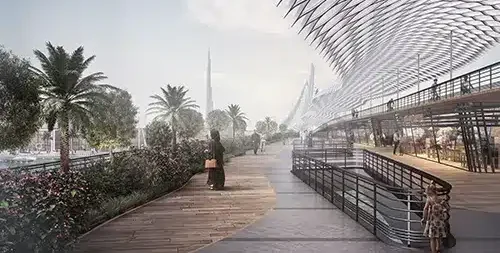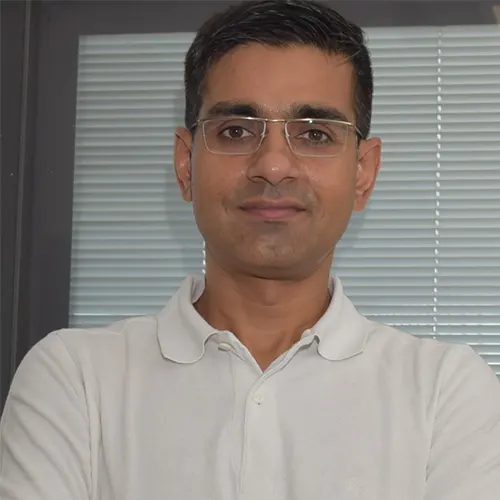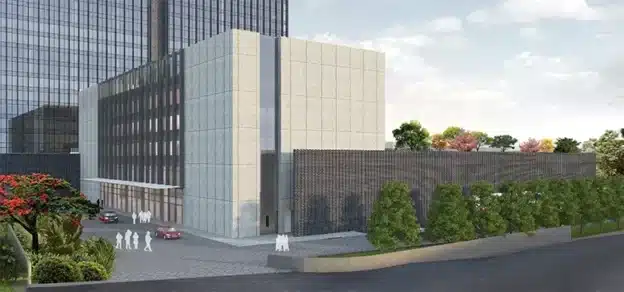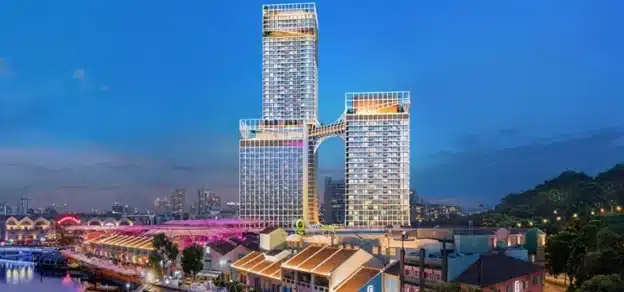Energy-efficient architecture
Façades serve as the structural, aesthetic, ventilating, and bracing aspects of buildings. In a highly populated country like India, it’s essential to accommodate the increasing urban densities that increase foot traffic in public areas. Urban and suburban skylines have changed due to vertical growth. A 2019 estimate claims that fenestration accounts for about 65% of the 10,000 crore rupee industry. This business is propelled by technological advancements and is mostly supported by the real estate market’s explosive demand.
How do we ensure that fenestration development is sensitive to the Indian context, follows the proper path, and keeps up with the rising demand? A comprehensive view of this advancement contains the solution to this query. Fenestration is now a crucial, practical component of places rather than just an ornament. One can ensure a sustainable alternative by combining the appropriate fenestration technology with passive site-responsive and context-specific strategies.

FACTORS CONSIDERED FOR EFFICIENT BUILDINGS
-
Choosing the right material
Fenestration systems made of high-quality, long-lasting materials like aluminium are anti-corrosive and malleable, which makes them perfect for various construction typologies.
Primary requirements for fenestrations should also include maximising natural light in a place and providing thermal comfort through natural ventilation. The market today offers a variety of treatments and types of glass, including laminated, tempered, and toughened glass. The most reliable method of putting these tactics into practice is selecting the proper glass type based on the above-mentioned factors. Making the appropriate decision lessens the burden on mechanical ventilation and lighting systems. Higher energy efficiency is also ensured, which is another step toward sustainability. In the long run, putting natural light and ventilation first improves public health by lowering our reliance on artificial systems.
-
Inherent properties of aluminium:
Aluminium is a robust material that is easy to work and innovate with. It guarantees longevity and gives excellent value for its worth. In addition, it’s recyclable and consumes less energy than steel during its manufacturing and recycling process. This helps lower the replacement costs of fenestration systems. Since it’s easier to install, clean, and maintain, it becomes a viable investment for hospitality spaces to save on the cost and workforce required. Besides that, aluminium can also withstand harsh weather conditions without resulting in a lot of wear and tear – making it a good fit for tropical and cold climates.
Furthermore, combining this fenestration material with energy-efficient glazing and a layout that optimises natural light and ventilation can result in a sustainable fenestration system that works well with the site’s climatic conditions. Incorporating suitable materials such as aluminium in fenestration systems, accompanied by proper design and maintenance strategies, can help make more sustainable choices in the hospitality sector.

-
Processes and life-cycles
It is essential to consider the materials utilised and their life cycle, given the startling rate at which projects are produced in the Indian construction sector. First and foremost, using locally obtained, indigenous, and natural materials significantly lowers the cost. Second, materials with a longer lifespan are rigid and guarantee the longevity of construction, leading to reduced maintenance expenses over time. Finally, the project’s carbon footprint is decreased by using recyclable and recycled components.
-
Supportive strategies
One can use architectural solutions in conjunction with the proper fenestration technology for better outcomes. For example, installing sunshades, dry-stone cladding, and vented façades can help lessen heat gain in a structure. In addition, one can get the best possible solar absorption by planning the building mass following the site’s orientation. Openable, adaptable, and user-friendly fenestration systems can produce the best results.

ENERGY EFFICIENCY AND GREEN TECHNOLOGY
-
The union of smart and green buildings
Green buildings are environment focused, giving the utmost importance to sustainable and eco-friendly practices. Smart buildings, on the other hand, are centred around efficiency and optimising comfort for the user through intelligent, automated processes. Going forward, the union of these two concepts will take place rapidly by incorporating green practices into intelligent systems. The fenestration industry, for example, has made efforts to integrate smart systems like better locking mechanisms and ergonomic designs into energy-efficient windows and façades. These systems are developed based on in-depth calculations, which results in high performance.
-
The role of renewable energy in this revolution
The passive building design is a great starting point while addressing the built environment, but in today’s hybrid world, it seems insufficient on its own. Buildings must integrate renewable energy sources from their planning stage to the construction and post-construction phases. Not just that, the construction industry should consider using renewable energy sources. Stakeholders can shift manufacturing products such as fenestration, furniture, construction equipment and other building materials to a greener realm by using renewable energy sources for their processes.
UNDERSTANDING CLADDING:
-
Effective cladding methods

The exterior finishing technique known as cladding is analogous to a coat or an extra non-load-bearing layer. Along with making the exterior façade of the building aesthetically pleasing and decorative, it also assists in shielding the interiors from the damaging effects of the weather. The correct cladding reduces temperature variance inside buildings while also keeping the structure weathertight and economically viable. It also offers thermal insulation. Additionally, it aids in daylighting and interior acoustics improvement.
While different kinds of stone have historically been very popular, there are now a wide variety of materials available, including ceramics, aluminium composite panels (ACP), terracotta, Corian, zinc, glass reinforced concrete panels, corten steel, concrete fibre boards, copper, fibre reinforced plastic, wood, wood composites, exterior grade laminates, glass, and LED façades, to name a few.
The fixing technology of these materials has undergone rapid change, switching from traditional wet fixing to dry systems, significantly reducing the time required for the building process. The choice is made very carefully, taking into account the location, the weather, the neighbourhood, the type of property (residential, commercial, industrial, etc.), and other factors that might help to prepare for the material appropriately. As a result, there are now sustainable materials that are also simple to maintain, resulting in cheap maintenance costs for the structures they are used in.
Trend-setting cladding materials:
1. Glass Reinforced Concrete: Due to the adaptability it provides and the fact that it is around 80% lighter than pre-cast steel reinforced concrete cladding, architects and engineers prefer to use glass reinforced concrete (GRC), also known as GFRC concrete, for exterior cladding.
2. Terracotta Exterior Cladding: A newer style of curtain wall system that uses terracotta panels as a decorative element is called a “terracotta façade system.” With its big format panels and practical heights that provide total privacy, it is the ideal marriage of conventional materials and modern architecture.
3. Rainscreen Cladding: To protect your core walls from moisture, the rain-screen cladding system is composed of an insulation layer and cladding material that is bonded to the property using a supporting framework. To suit architectural elements, façade ends, and junctions, rainscreen cladding can readily bend and rolled. These eco-friendly cladding technologies improve thermal and acoustic insulation.
4. Solar Shingles: Solar Shingles are meant to almost seamlessly mix in with conventional roof tiles and are simpler to install than conventional solar panels. Solar shingles shield the roof from the elements, reduce energy bills, and offer a sustainable energy source.

Intelligent cladding
Intelligent façade detailing with responsive and reactive surfaces allows for the design and implementation of several options. The latest developments in designing sustainable structures are Kinetic surfaces with mechanical/ electrical designs. Surfaces created using computational analysis in digital software allow for the moulding of numerous materials in accordance with regional climate conditions. As a result, cladding and surface textures are simple to implement. However, they might not be economical. The intention of designing and implementing such a surface contributes to creating interactive and intelligent surfaces with a range of potential. Such materials are executed in precise formats to react to the surroundings.
Each player in the construction sector is responsible for contributing to environmental sustainability. The potential of these technologies has been revealed by research and invention. But it’s important to move forward and take the appropriate course of action. Sustainable development is not a novel idea in the Indian context because it is firmly anchored in conventional construction techniques. However, without straying from the sustainable path, the current issue that needs to be met considers the growing technological and consumer demand.














